|
1. Dangerous Cellars - Cellar Danger Prevention
The cellar hazard prevention activities primarily deal with cavities close to the surface, with a maximum depth of 20-25 meters.
Artificial caverns and cellars, which are the main object of cellar hazard prevention, can be found all over our country. According to the wine law there are almost 500 settlements in Hungary with cellars. And this number also includes the settlements under which cellar systems designed for other purposes are located. Over the past few years, more than 350 municipalities have been involved in some form of emergency response by the central government and local governments. In other words, the problem is of national importance.
Dealing with emergencies and damage is important because these cavities and cellars are largely located below built-up areas. This is due to historical reasons. On the one hand, many cellars have already been excavated under buildings, and on the other hand, over many centuries of open cellars, the surface has been built up over the centuries with the growth of the settlement, so dangerous objects endanger already occupied buildings.
The question of the stability and prevention of cellars and cavities carrying danger is a special area of geomechanics, since a number of specific circumstances, other than mining, determine the technical and legal action to be taken:
¨
cavities are located close to the surface and are therefore affected by surface installations and events (buildings, traffic, movement of surface and groundwater, etc.);
¨
despite their proximity to the surface, they were mostly mined;
¨
their surrounding rocks are of varying strength, even in places close to each other - even within a settlement - the quality and condition of the rock environment of the cavities is significantly different.
They are mostly located in low-strength rocks, the reason being that our ancestors predominated in such easy-to-work, carved rocks;
¨
cavities are usually located under structures (settlements, traffic routes) to be protected and preserved; therefore, the primary consideration is to protect them, often at the cost of removing them;
¨
in most cases, it is advisable to choose a solution that results in a usable cavity or storage space
¨
many natural stone crafts are mixed with supporting structures, so engineering mechanics must be considered in addition to rock-mining methods;
¨
cellar interventions are rarely foreseeable today, and well-established preliminary condition surveys decades ago have ceased to exist;
¨
the destruction of cellars and cavities is sudden and rapid and usually only becomes apparent when damage appears on the surface;
¨
as a result of the above, intervention is usually required quickly and in a short period of time;
¨
when carrying out emergency response to cellars, you must keep in mind that they can be subsequently checked, and do not cause future generations to suffer the same damage as we do;
;
¨
last but not least, the financial resources available for interventions are very limited, with the vast majority of damaged cellars being owned by individuals or organizations who are unable to cover their own costs. Therefore, the involvement of institutionalized financial resources (central, municipal, tender, etc.) and the necessary analytical and preparatory activities are essential.
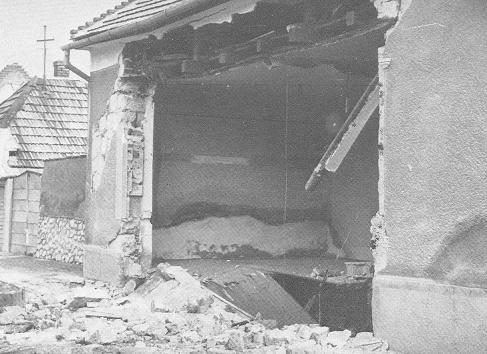
Eger 1970
House wall collapse due to cellar breakage
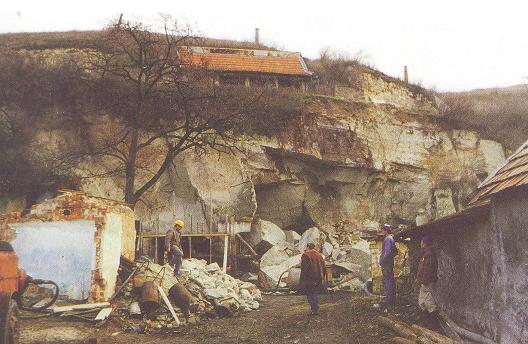
Ostoros 1992
Rock break above cellar entrances
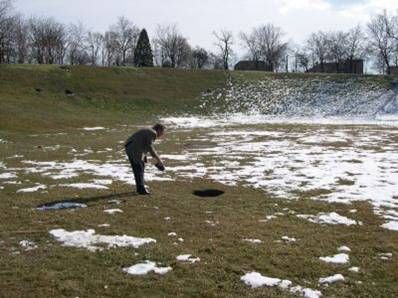
Budapest X. district February 2004
The scene of a fatal accident due to a cavity break
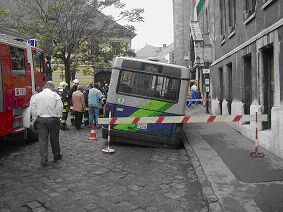
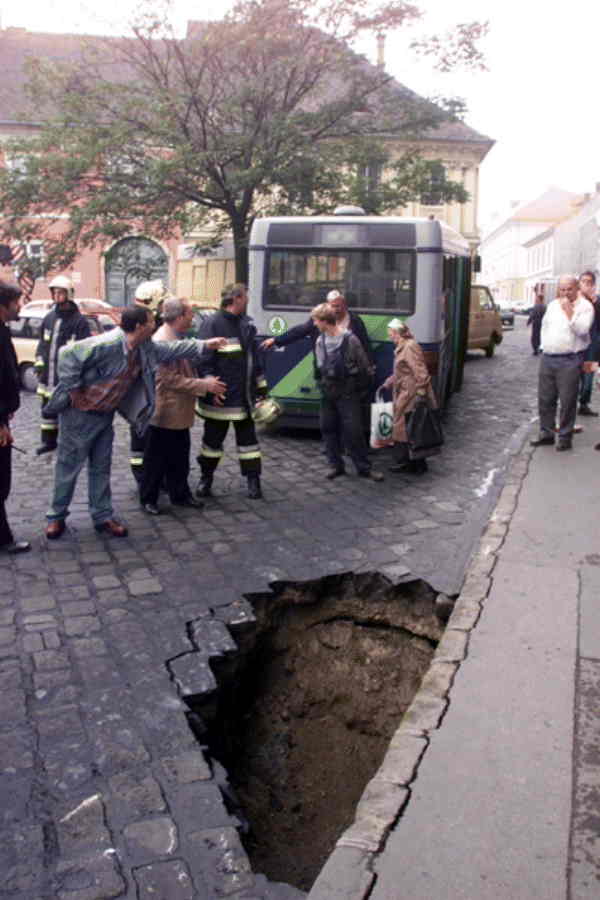 Hole break under the bus
Buda Castle, Vienna Gate Square
October 2004
Hole break under the bus
Buda Castle, Vienna Gate Square
October 2004
|